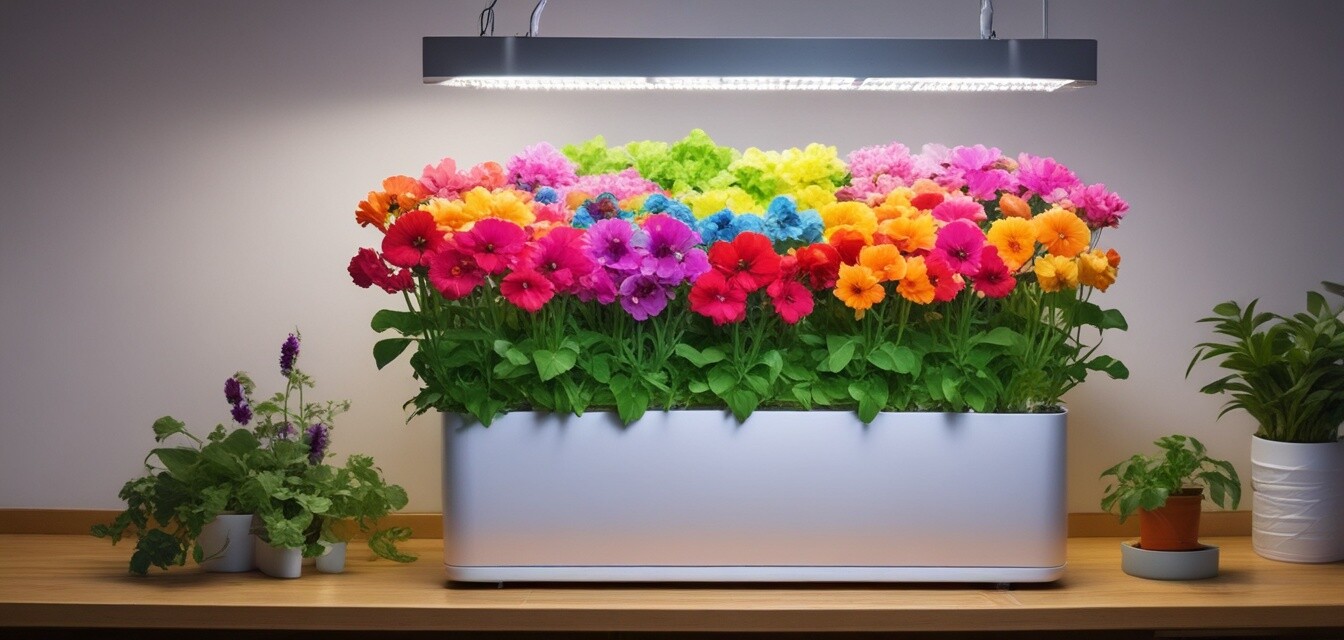
Hydroponic Flower Gardening: A DIY Approach
Key Takeaways
- Hydroponic gardening allows for efficient flower growth without soil.
- Choosing the right flowers enhances aesthetics and improves plant health.
- Simple DIY setups can be built using household items.
- Proper light, nutrient solutions, and care are essential for success.
- Regular monitoring helps ensure optimal growing conditions.
For flower enthusiasts looking to elevate their gardening game, hydroponic flower gardening presents an innovative, soil-free method to enjoy blooms year-round. This DIY approach enables anyone to create stunning arrangements while maximizing space and plant growth efficiency. Whether you have limited outdoor space or simply wish to explore a new gardening method, this guide will walk you through the essentials of setting up your own hydroponic flower garden.
Understanding hydroponic gardening
Hydroponic gardening is a method of growing plants in nutrient-rich water instead of soil. This system offers several advantages over traditional gardening:
- Faster growth rates due to direct nutrient access.
- Space efficiency, perfect for urban environments.
- Reduced water usage compared to soil gardening.
- Less chance of pests and diseases typically found in soil.
Essential components of a hydroponic system
Setting up a hydroponic system requires understanding its key components. Here’s a breakdown of what you’ll need:
| Component | Description |
|---|---|
| Grow Light | Provides necessary light for photosynthesis, especially in indoor setups. |
| Growing Medium | Airtight and lightweight material that supports the plants while allowing moisture and nutrients to reach them. |
| Nutrient Solution | A mix of essential nutrients and minerals dissolved in water to feed your flowers. |
| Pumps and Aeration | Circulate nutrient solution and oxygenate roots for optimal growth. |
| Monitor and Sensors | Tools to help track pH, moisture, and nutrient levels in your system. |
Choosing the right flowers for your hydroponic garden
Not all flowers grow equally well in hydroponic systems. Here are some popular options that thrive in a soilless environment:
- Roses: Classic choice, provide beauty and fragrance.
- Orchids: Diverse species with unique blooms; require careful management.
- Gerberas: Bright, cheerful flowers good for beginners.
- Chrysanthemums: Colorful and resilient; ideal for hydroponics.
Setting up your hydroponic flower garden
Establishing your DIY hydroponic garden involves a few simple steps:
- Choose a location: Find a spot with ample light or space for grow lights.
- Select your system: Decide between NFT (Nutrient Film Technique), DWC (Deep Water Culture), or another method based on your skill level and space.
- Gather materials: Refer to the earlier table for essential items needed.
- Mix the nutrient solution: Follow manufacturer instructions for creating a nutrient-rich environment.
- Plant your flowers: Position seedlings in the chosen medium and ensure good moisture.
- Monitor growth: Regularly check pH and nutrient levels to ensure optimal plant health.
Tips for successful hydroponic flower gardening
Beginner Tips
- Start with easy-to-grow flowers to gain confidence.
- Invest in quality grow lights for indoor setups.
- Regularly check the water level and nutrient concentrations.
- Keep a journal to track your progress and any adjustments needed.
- Join a hydroponic gardening community for advice and support.
Common challenges and solutions
Even with the best planning, you may encounter a few challenges. Here’s how to address them:
| Challenge | Solution |
|---|---|
| Algae growth | Keep nutrient solution covered and control light exposure. |
| Pest infestations | Use natural pesticides and maintain good airflow. |
| Nutrient deficiency | Check solutions regularly and adjust as necessary. |
Conclusion
Creating a hydroponic flower garden is a rewarding and visually stunning project. With the right planning and maintenance, you can enjoy beautiful blooms year-round without the limitations of traditional soil gardening. Don't hesitate to explore various flower options and grow techniques to find the ideal setup for your unique space.
Pros
- Year-round flower production regardless of external weather.
- Less required maintenance compared to traditional gardening.
- Potential for faster growth due to direct nutrient access.
Cons
- Initial setup can be costly.
- Requires more technical knowledge than traditional methods.
- Monitoring is essential to prevent system failures.
If you're interested in learning about more projects, check out our DIY Projects category for ideas and tips on enhancing your hydroponic gardening experience.

